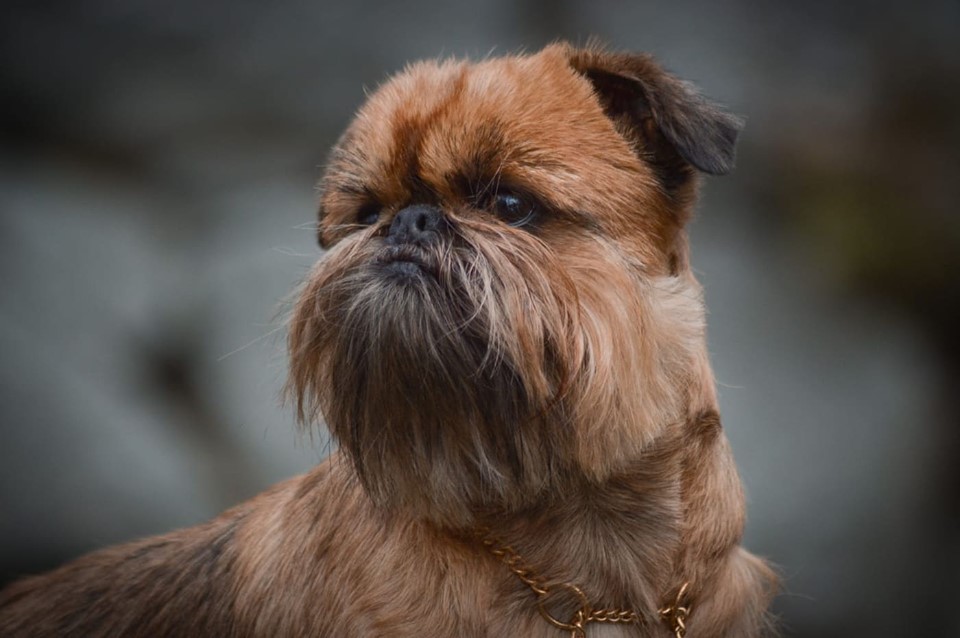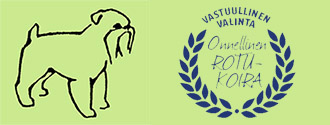Griffons
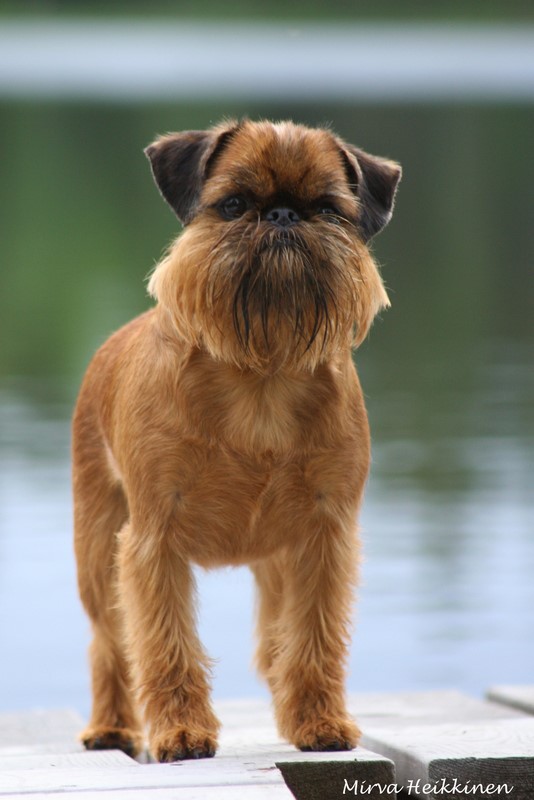
How does the Griffon look like?
The breed consists of three FCI recognized variations called Griffon Bruxellois, Griffon Belge and Petit Brabancon. Bruxellois is known as rough-coated and red-coloured – shades varying from nearly wheaten colour to deep mahogany, the last being the most wanted. Belge is known from his rough coat, but the accepted colours are black, black&tan or the mixture of black and red. Brabancon is always smooth-coated and coloured with red, black or black&tan. Griffon is a toybreed from the FCI Group 9. The height is not dictated by the standard, but the weight ought to be between 3 and 6 kg’s. The size is sometimes highly varying from the ideals and you can meet Griffons of just 2 kg’s up till 8-10 kg’s. The exaggerating at both ends should be avoided. While judging Griffons the correct breed type should be the main thing to be appreciated and in estimating the size the keywords should be ”heavy for size”.
Griffon temperament
The Griffon character is often described being terrier type, which image suits fine to this breed. Like terriers the Griffon is intelligent, alert and the most faithful companion. The Griffon is highly attached to his ”chosen” family and wishes to participate to every little task in the household. It is a smart little fellow and in the most of the cases very willing to please – thanks to the Pug and Spaniel crossings made in the past – which qualities make the breed easy to live with also at the beginner’s. To mention something from the other side of the coin, Griffons can be terrible barkers sometimes, especially if the household is conquered by several of these lil’ heartbreakers, as it often happens once you’ve come into the breed. In the country of origin, Belgium, the Griffon was not just a ratcatcher, but also a guardian, who alarmed, if there were some intruders. Sometimes Griffons can be reserved towards strangers, but obviously shy they should not be.
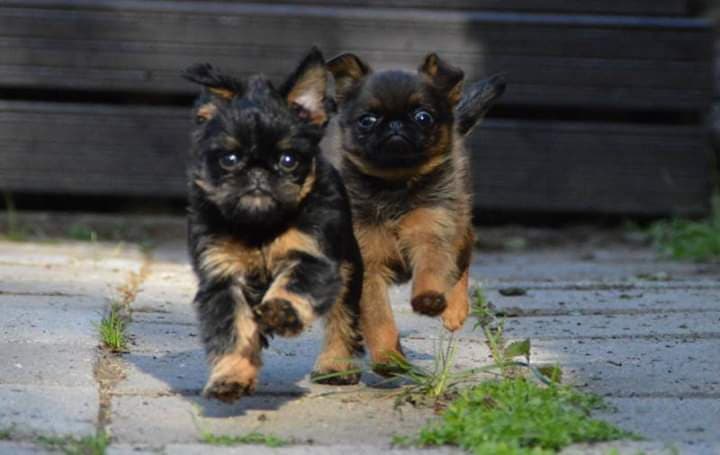
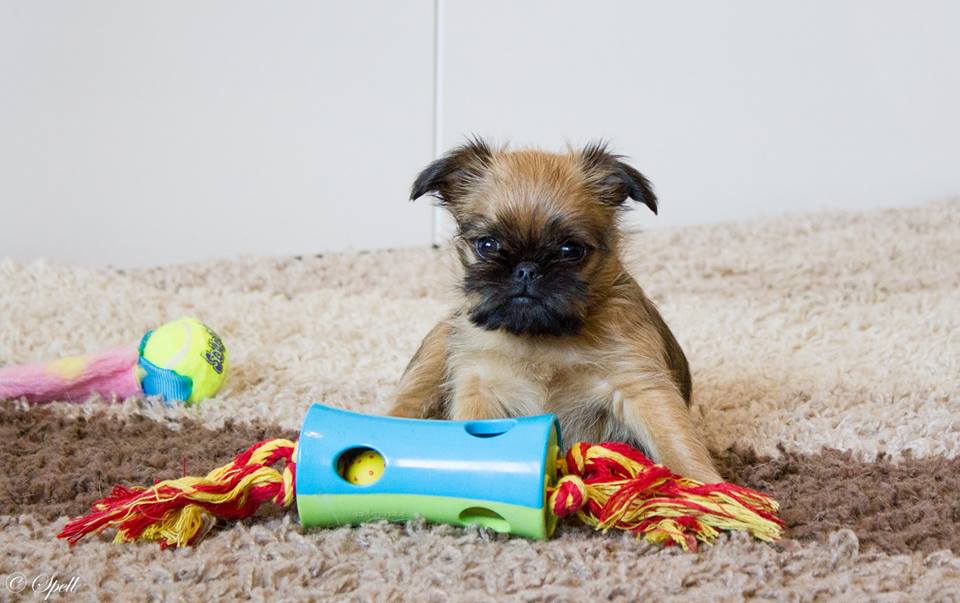
The daily care of the Griffon in a nutshell
The rough-coated Griffon needs stripping about twice a year, but on the other hand it is not shedding. If the coat is of the ideal quality, it does not become dematted or dirty too easily and combing the coat once or twice a week is quite enough to keep the coat in order in the regular basis. Less washing the better, except the beard that might need extra attention and shampooing for removing the food stains. The smooth Griffon is somewhat an opposite. It is shedding typically twice a year, but on the other hand it does not need stripping and the coat is ”wash-and-go” at any time of the year.
The other little duties are the same as in any breed; checking ears and eyes on the daily basis, clipping toenails once a week or when needed and naturally proper feeding and an appropriate amount of exercise for keeping up the tip-top shape. The best exercise for a young, immature Griffon is the fun and games in the garden, woods and fields, but an adult Griffon – especially a city-Griffon – needs his daily walks, but being a toydog this does not mean hours of walks or training with a bicycle.
Health matters
Unfortunately the general belief is that the more eccentric looks, the poorer health there is in the breed. Against all odds, even if there are these certain generally recognized problems in the breed, I basically find the breed having overall strong and solid health. Depending of course, what exactly the word ”health” means to you! To me this word contains the good quality and long span of life. Perhaps for its special looks, Griffon never reached the popularity of some other breeds. The blessing in disguise was that this breed has never been good enough ”for making money” and therefore the breed has stayed out from the puppy mills or backyard breeders in the most of the countries and instead has been kept in the hand of entrusted breeders, who have taken a pretty good care of the health matters too.
Here in Finland the most of the breeding animals are checked for the patellas and eyes. Luxating patellas have been found from time to time as well as some cataracts.
The most serious one of the health issues in the breed currently is the Chiari Malformation/Syringomyelia. This condition has probably occured in the breed for ages, but just recognized a few years back. A lot of breeders and researchers over the world are making their hardest effort to find out more about this serious illness for improving the breed in the future. The MRI testing is strongly recommended to the breeding animals of the breed.
From time to time you can find some allergies of varying degrees, cushings disease, heart murmurs and the tendency of having calcium oxalate stones in the breed.
Griffons are not made for the extreme weather conditions like ours can be sometimes and in wintertime you should take extra good care of your Griffon and equip him with a jacket or a pullover and not take him out for too long periods of time.
